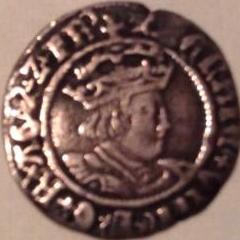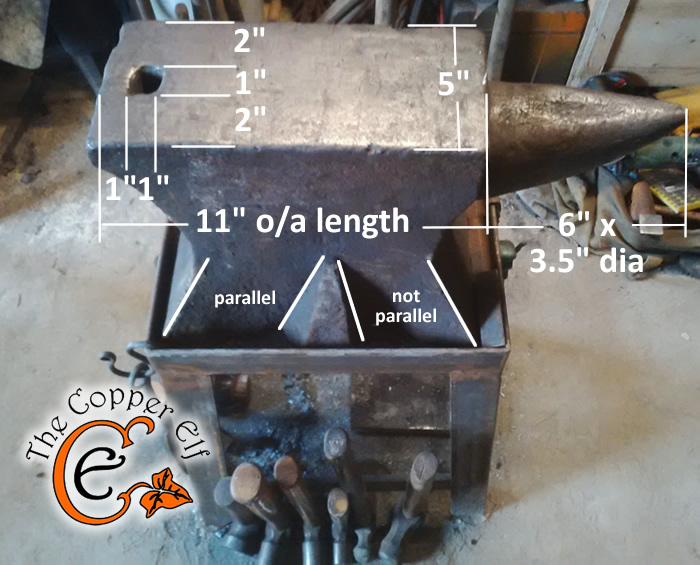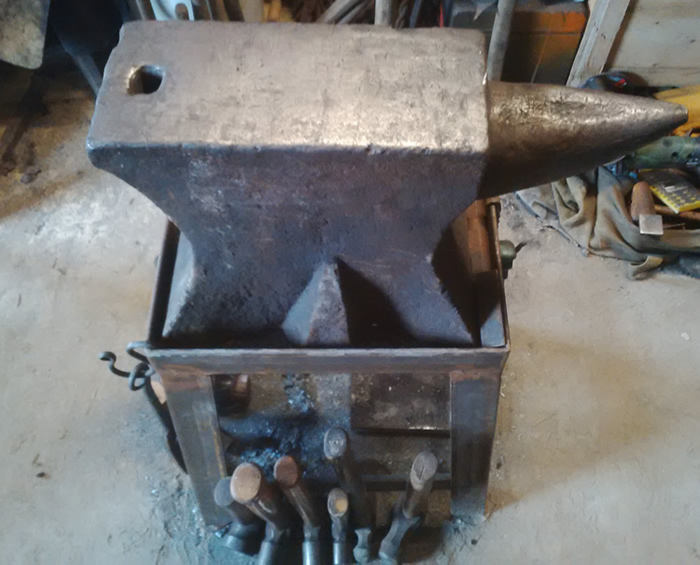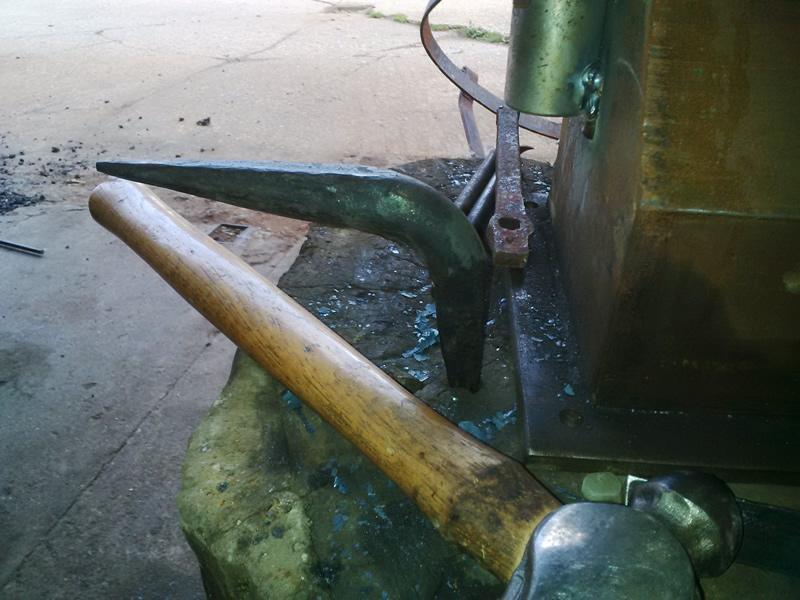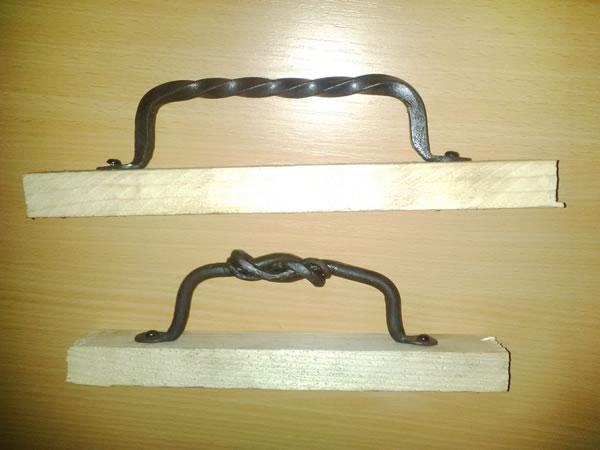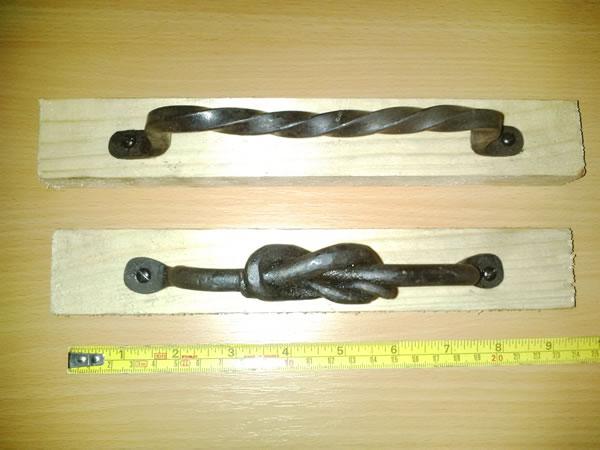-
Posts
33 -
Joined
-
Last visited
Profile Information
-
Gender
Male
-
Location
England
-
Interests
All forms of 5th to 7th century metalwork; iron, copper alloy, precious, smelting, hot & cold forging and casting.
Recent Profile Visitors
1,897 profile views
-
To best of my knowledge Samual Alsop was the largest (only?) maker of 5th foot anvils and the "S" is their early makers mark. Alsop had a number of foundries in Sheffield, this is how they moved around and name changes: Samuel Alsop Founder & anvil maker Sheffield Moor, 1787 John Alsop Anvil maker South Street, 1791 William Alsop Anvil maker South Street, 1811 William & John Alsop Anvil makers Earl Street, 1821 William & John Alsop Whitesmiths & anvil makers 21 South Street, 1822 William & John Alsop Anvil makers 21 South Street and 1 Earl Street, 1828 William & John Alsop Anvil makers South Street, 1829 (last entry in Pigot's Commercial Directory - 1828 to 1829, after that the company disappears)
-
Mine is 11" long, 5" wide with a 6" long bick, can't remember the height. It is approx 150lb in weight.
-
It was made in Sheffield, I believe it was made by Alsop. It would have been made between 1700 and 1780 (that's when they stopped putting on the fifth foot). It's designed for heavy work by a striker standing on the side of the extra foot, you may find the face slopes slightly down toward that edge too. If it is anything like mine you will find it a "quiet" anvil to work on, more of a thud than a ring, the mass and shape not vibrating as much as other anvils which is a good thing if you're striking at it all day! I have heard of ones with cutting tables but never seen one, but they were only made for a short time. I have seen them without a bick too. My bick has been used as a cutting table over the years. These things are definite work horses for heavy work, even the heels are so short they can take a massive pounding.
-
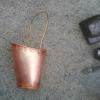
Safety gear in historical recreation setting
Copper Elf replied to JHCC's topic in Safety discussions
I used to use it on a stump for around a year until the stump split during a workshop move, it was the same then as it is now. Earlier this year I was at a reconstructed Anglo-Saxon village which has a forge, the anvil there is an old block anvil sunk into a massive stump with a bick also sunk into it, these didn't ring like modern anvils either. -

Safety gear in historical recreation setting
Copper Elf replied to JHCC's topic in Safety discussions
I do work cold metals in dishing forms and on stakes, I also wear ear protection for that because it hurts if you don't (unless it is a quick job). My point is that when I am working on my anvil the volume is very low and more of a thud. There are some machines I work with in another job I do where I insist on all operatives using anti-vibration gloves and ear protection. A level of common sense is needed; today I did a job wearing ear protect and eye protection (cutting nuts in a confined space), the same job in a different environment (outdoors for example) the ear protection from a battery grinder may not of been needed. -

Safety gear in historical recreation setting
Copper Elf replied to JHCC's topic in Safety discussions
Interesting comments about ear protection. I use a 300 year old anvil, don't use noise protection because it doesn't ring like more modern anvils, it is a solid lump, it works lovely, just no ring. We have some anvils in the storage in the workshop that sound like a peel of church bells when hit, I think I would be inclined to use ear protection with them like I do when I grind for any extended period of time. It is quite possible that noise reduction PPE was not required before the 19th century, and I would argue that if you are demonstrating a period you should use a period anvil. Eye protection is a matter of choice I suppose, I generally find that (again it may be my ancient 5th foot) that very rarely does anything come near my face, but get the grinder out and the so do the safety glasses. I am a massive fan of steel toe caps and mid-soles, which is a problem doing "period", stepping on sharp or hot stuff in a turn-shoe is no fun, nor is dropping a hammer or something heavier on your feet, that is where I draw the line. -

Historical Blacksmith's tools
Copper Elf replied to ThomasPowers's topic in Blacksmithing, General Discussion
The 8th century Franks Casket depiction of Wayland also shows this style of block anvil which is mounted into a wooden base: Here is Regin and Sigurd working a forge with a block anvil from the 12th century, Hylestad church: http://www.pitt.edu/~dash/door3932.jpg -

really ugly anvil with bad repairs
Copper Elf replied to the iron dwarf's topic in Anvils, Swage Blocks, and Mandrels
I found it to be a perfectly usable anvil, needs a stand to get a real feel of it, at the moment it is on a set of plastic builder's steps. I will keep using it to clean it up. I am the first person to hit metal on this for ??? years -
I can relate to that, which is why I get narked when people leave metal in the quench and boil the water!
-

An early Christmas present to the newbies
Copper Elf replied to Joel OF's topic in Blacksmithing, General Discussion
Brilliant! -

Blacksmithing Supply Recommendations
Copper Elf replied to AuburnMind's topic in Blacksmithing, General Discussion
The ring end is around an inch deep and too great a diameter for a ring style bottle opener. A greater concern when I made this was the aesthetics, if I destroyed the ring end then you just have a bit of old metal that is unrecognisable (and not functioning well as a bottle opener), by making the beer spanner the overall look of the con rod is preserved making a more attractive and functional tool. Dwarf is right though we were just seeing how the metal responded to a lumping with a hammer, this was a quick and easy test. -
Bick anvil I made on the Iron Dwarf anvil posted a couple of days ago. The bick is 25mm diameter mild drawn to a square point for mounting and a flatten curve for working on. Based on 10th century Anglo-Scandinavian bicks from Coppergate, York, and the Mastermyr Hoard.
-
Good point about the screws, however I was thinking cupboard door not doorway door.
-
-

I had a broken horseshoe...
Copper Elf replied to Copper Elf's topic in Blacksmithing, General Discussion
I'm out by Kettering

